Can You Apply Bondo To Bare Metal "Bmw"
DIY
How to apply body filler to your car
How to apply bog like a professional
16 Jun 2019
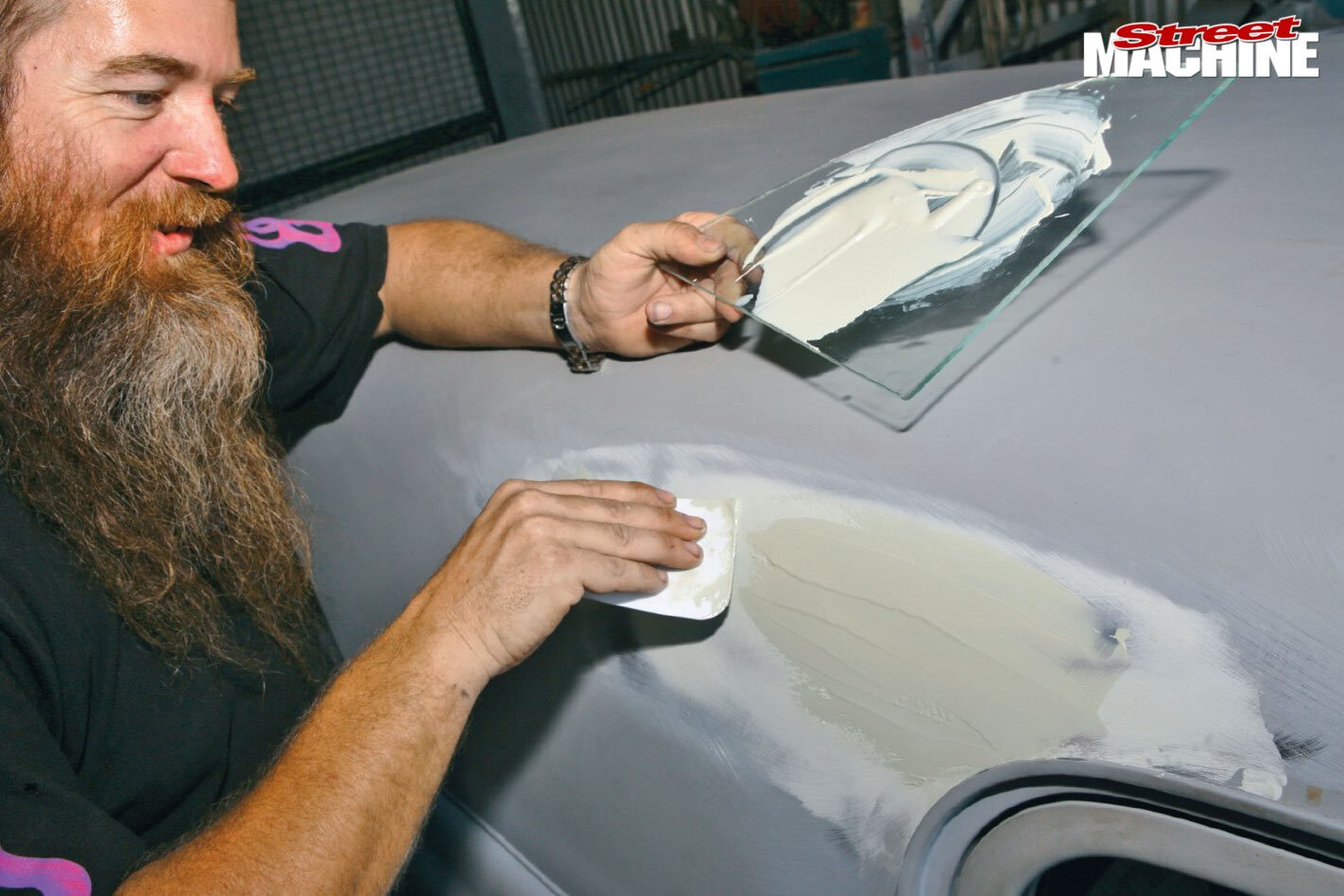
Although applying and working body filler is relatively straightforward, there are a number rules that need to be adhered to for you to achieve a high-quality finish that will stand the test of time.
This article was first published in the July 2007 issue of Street Machine
Before adding any filler, you should get the metal fairly close. If your bog needs to be 13mm thick, it's time to re-appraise your panel beating. Some more hammer and dolly work may be required, or a whole new panel. Also, before stripping any paint, run a metal body file or sanding board over the area to show high and low spots.
Use a straight edge — such as a steel rule — against the panel to help determine how high and how low these spots are. Low spots should be brought up and high spots tapped down, using either hammer and dolly or a panel slapper, possibly along with some heat shrinking. However, metal finishing is for another article.
Once you're happy and can only see glimpses of daylight between the straight edge and panel, sand the whole area back and key the metal using 36-grit paper. For small repairs, you can bog directly over the bare metal. If the repair is larger, or you're looking for a longer-lasting job, apply a base coat of epoxy primer before laying on the filler. That's what I did on the job here.
STEP-BY-STEP:
 STEP 1. Always sand an area a good deal larger than you intend to fill as this will help you to feather out the edges later on. It also helps avoid nasty paint edges that will shrink back later. Once cured for 24 hours, key up the epoxy by giving it a light rub with some Scotch-Brite. This gives the bog something to bite on to.
STEP 1. Always sand an area a good deal larger than you intend to fill as this will help you to feather out the edges later on. It also helps avoid nasty paint edges that will shrink back later. Once cured for 24 hours, key up the epoxy by giving it a light rub with some Scotch-Brite. This gives the bog something to bite on to.
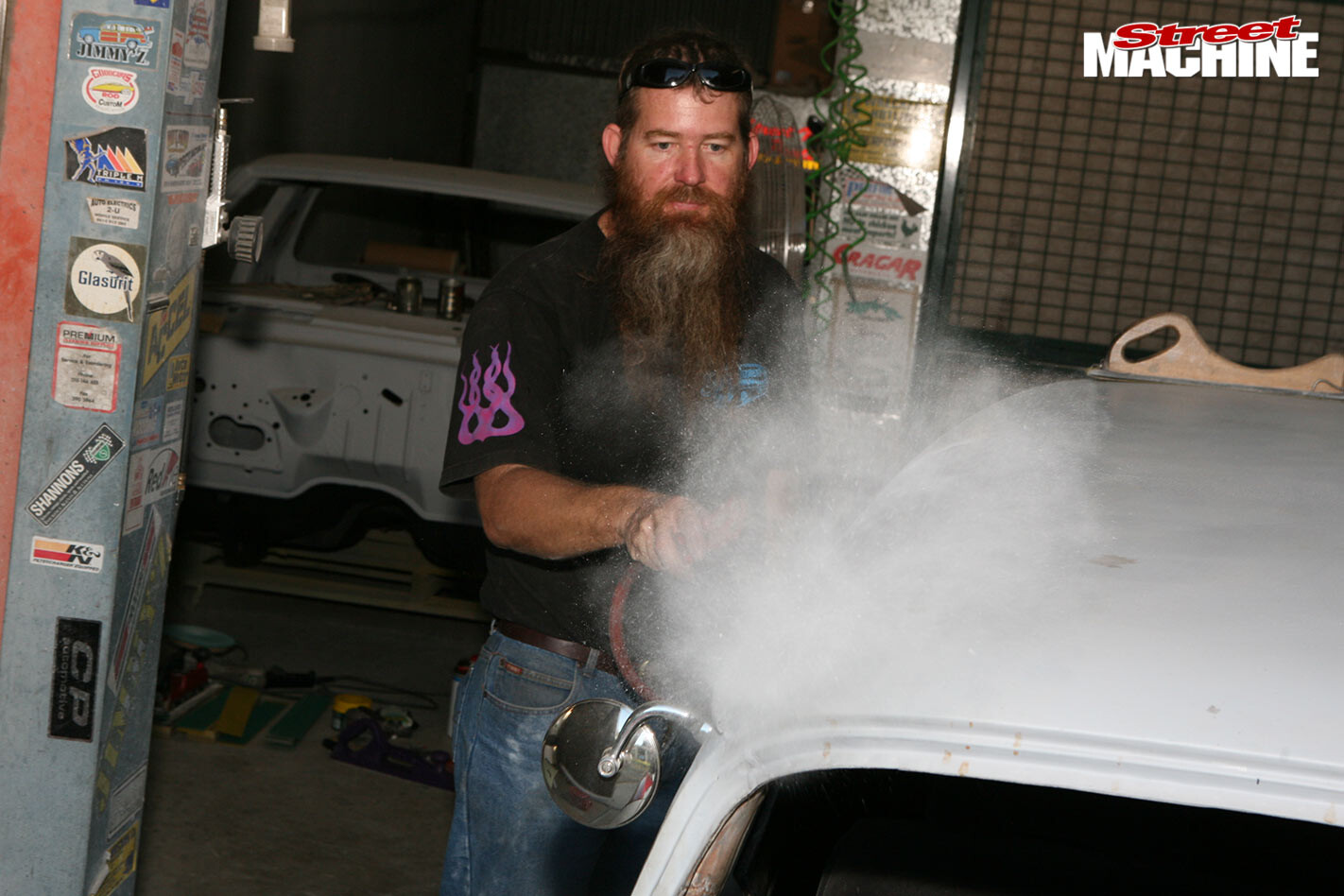 STEP 2. Blow away any dust as bog will not take to dusty or painted surfaces. It takes a little practice to determine how much bog you should apply in one go. When doing largish areas, don't attempt to put all your bog in at once. Beginners should start with workable quantities — about the same size as a serve of mash potato.
STEP 2. Blow away any dust as bog will not take to dusty or painted surfaces. It takes a little practice to determine how much bog you should apply in one go. When doing largish areas, don't attempt to put all your bog in at once. Beginners should start with workable quantities — about the same size as a serve of mash potato.
 STEP 3. Metal or plastic applicators can be purchased from your local automotive paint outlet. Which one is better comes down to personal preference. Plastic applicators are more flexible, cheaper and can be cleaned more easily — bog can be popped off by flexing them. Metal ones hold their shape better and last longer. They also come in a range of sizes.
STEP 3. Metal or plastic applicators can be purchased from your local automotive paint outlet. Which one is better comes down to personal preference. Plastic applicators are more flexible, cheaper and can be cleaned more easily — bog can be popped off by flexing them. Metal ones hold their shape better and last longer. They also come in a range of sizes.
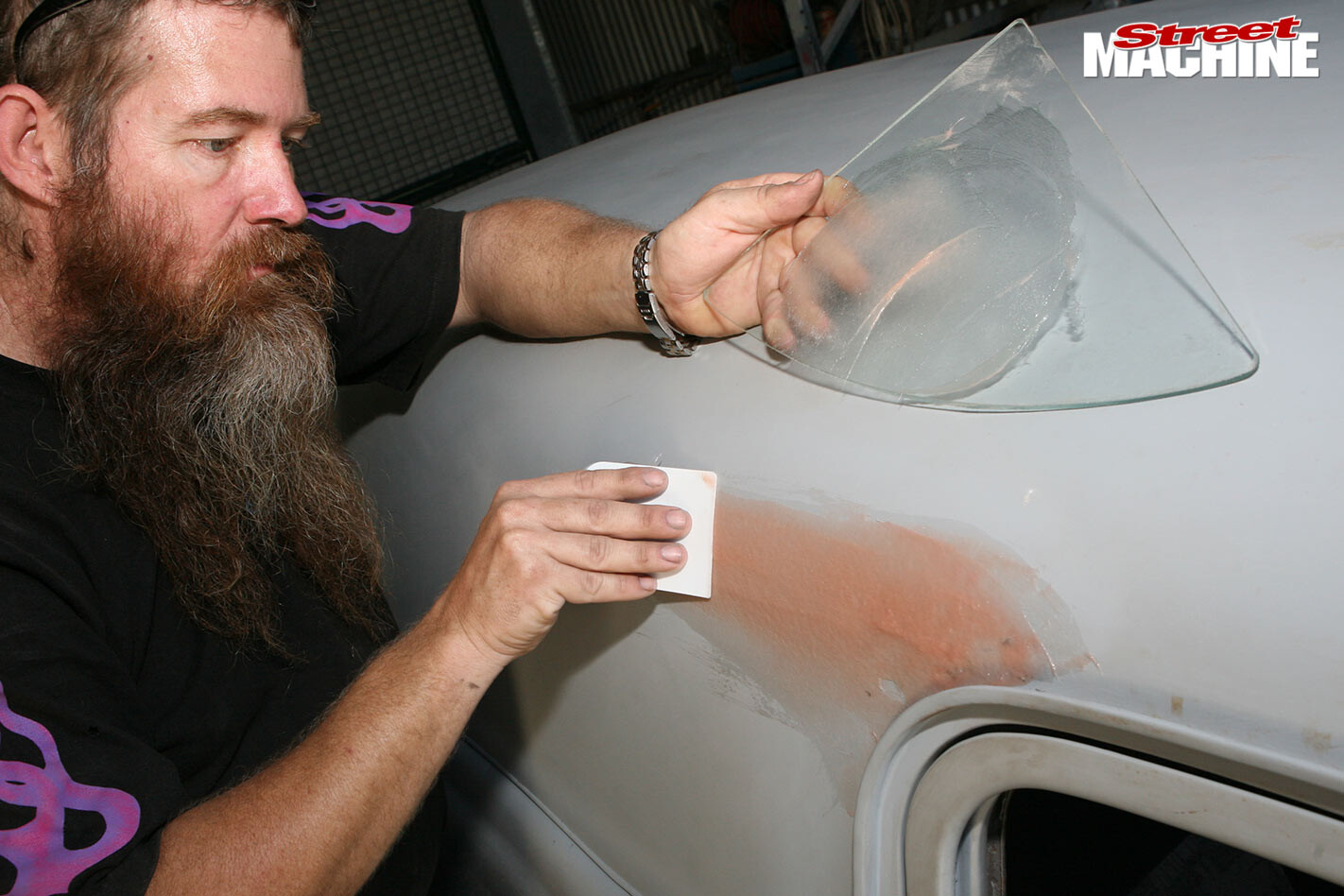 STEP 4. Fibreglass bog can go on thicker than finishing bog, so start with this to build up a foundation. Squeeze out 40–50mm of hardener to one serve of bog (mashed spud serving). If it's a hot day use a bit less hardener, more if it's cold. Fibreglass fillers are mixed the same way (steps 5 & 6), but go off a lot quicker — so beware!
STEP 4. Fibreglass bog can go on thicker than finishing bog, so start with this to build up a foundation. Squeeze out 40–50mm of hardener to one serve of bog (mashed spud serving). If it's a hot day use a bit less hardener, more if it's cold. Fibreglass fillers are mixed the same way (steps 5 & 6), but go off a lot quicker — so beware!
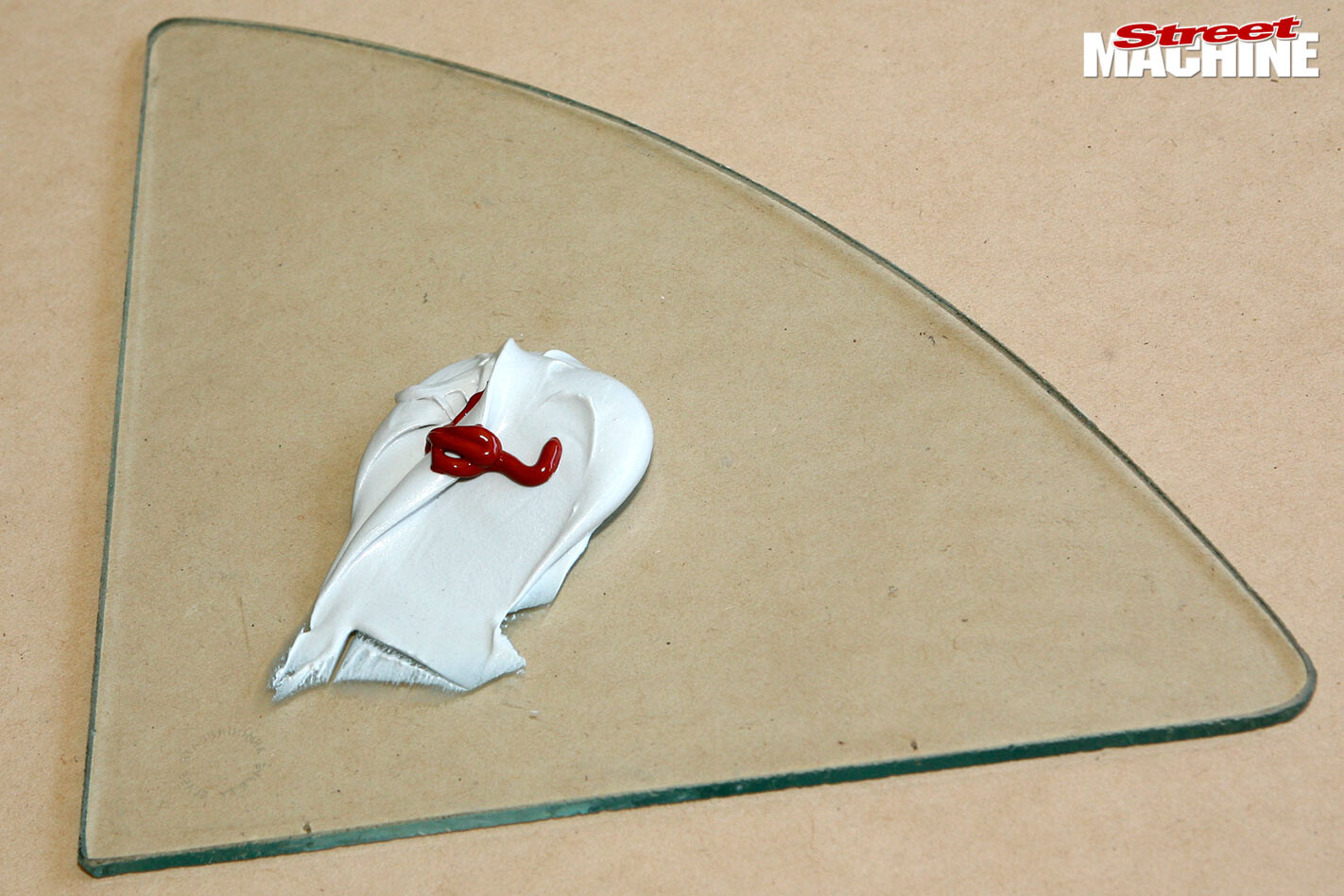 STEP 5. Using a clean applicator, scoop your serve onto a bog board — smooth MDF, sheet steel or old quarter-vent window. Some people use cardboard but it's far from ideal. If you don't use a clean applicator, you'll end up with hard lumps in your bog which will give you all kinds of dramas when skimming the panel.
STEP 5. Using a clean applicator, scoop your serve onto a bog board — smooth MDF, sheet steel or old quarter-vent window. Some people use cardboard but it's far from ideal. If you don't use a clean applicator, you'll end up with hard lumps in your bog which will give you all kinds of dramas when skimming the panel.
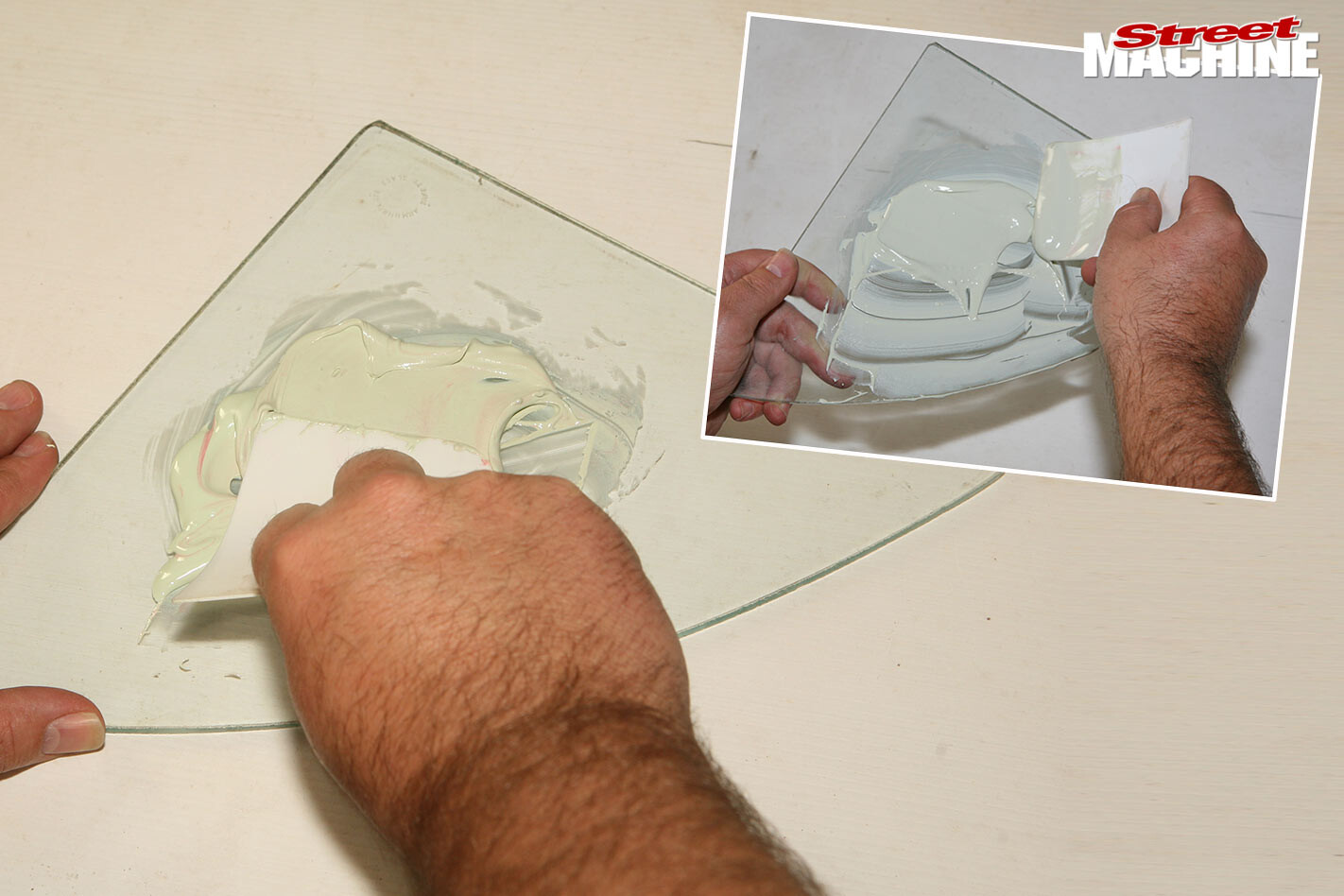 STEP 6. Mix the hardener in with a 'scooping up and folding back onto itself' action. Periodically scoop the edges up and squeeze them back into the middle to keep it all together. Mix until it's a uniform colour without any streaks. If not thoroughly mixed, some areas will harden much more slowly or not at all. Mix quickly and efficiently to allow adequate work time.
STEP 6. Mix the hardener in with a 'scooping up and folding back onto itself' action. Periodically scoop the edges up and squeeze them back into the middle to keep it all together. Mix until it's a uniform colour without any streaks. If not thoroughly mixed, some areas will harden much more slowly or not at all. Mix quickly and efficiently to allow adequate work time.
 STEP 7. It's like icing a cake — wipe, don't dab. Use full, even strokes that go past the repair area. Start with a firm, squeezing action to work out air bubbles for the base application, finishing with lighter, gliding strokes. As bog cures it gets hot; it can warp panels if too much is applied. Keep it to 6mm for bog and 3mm for final glaze.
STEP 7. It's like icing a cake — wipe, don't dab. Use full, even strokes that go past the repair area. Start with a firm, squeezing action to work out air bubbles for the base application, finishing with lighter, gliding strokes. As bog cures it gets hot; it can warp panels if too much is applied. Keep it to 6mm for bog and 3mm for final glaze.
 STEP 8. For big jobs you can rough out the shape with a 'cheese grater' once the bog has hardened slightly — around 5min on a hot day, more than 15min in the cold. If it clogs the grater or peels away from the panel, it's not hard enough. Machines like inline and random sanders are great on hardened bog but always finish off with hand tools.
STEP 8. For big jobs you can rough out the shape with a 'cheese grater' once the bog has hardened slightly — around 5min on a hot day, more than 15min in the cold. If it clogs the grater or peels away from the panel, it's not hard enough. Machines like inline and random sanders are great on hardened bog but always finish off with hand tools.
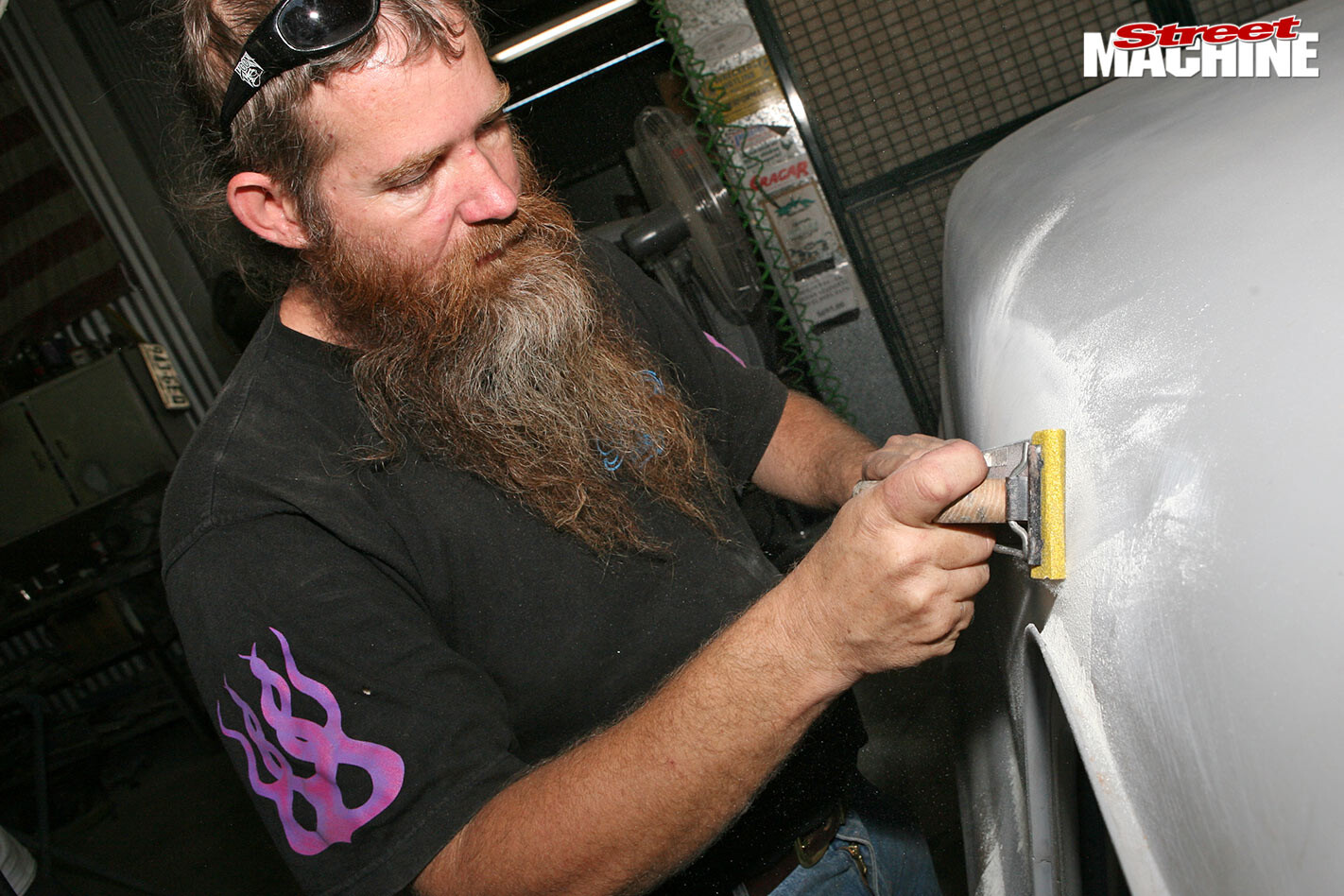 STEP 9. Once fully hardened, use a sanding board for the initial passes. If you're bogging lots of small areas in one panel, after the initial application just give the whole panel a thin skim. This makes life a lot easier as you wont miss any tiny dents. And it avoids disturbing surrounding bog when sanding. Always key up any existing bog before filling over it.
STEP 9. Once fully hardened, use a sanding board for the initial passes. If you're bogging lots of small areas in one panel, after the initial application just give the whole panel a thin skim. This makes life a lot easier as you wont miss any tiny dents. And it avoids disturbing surrounding bog when sanding. Always key up any existing bog before filling over it.
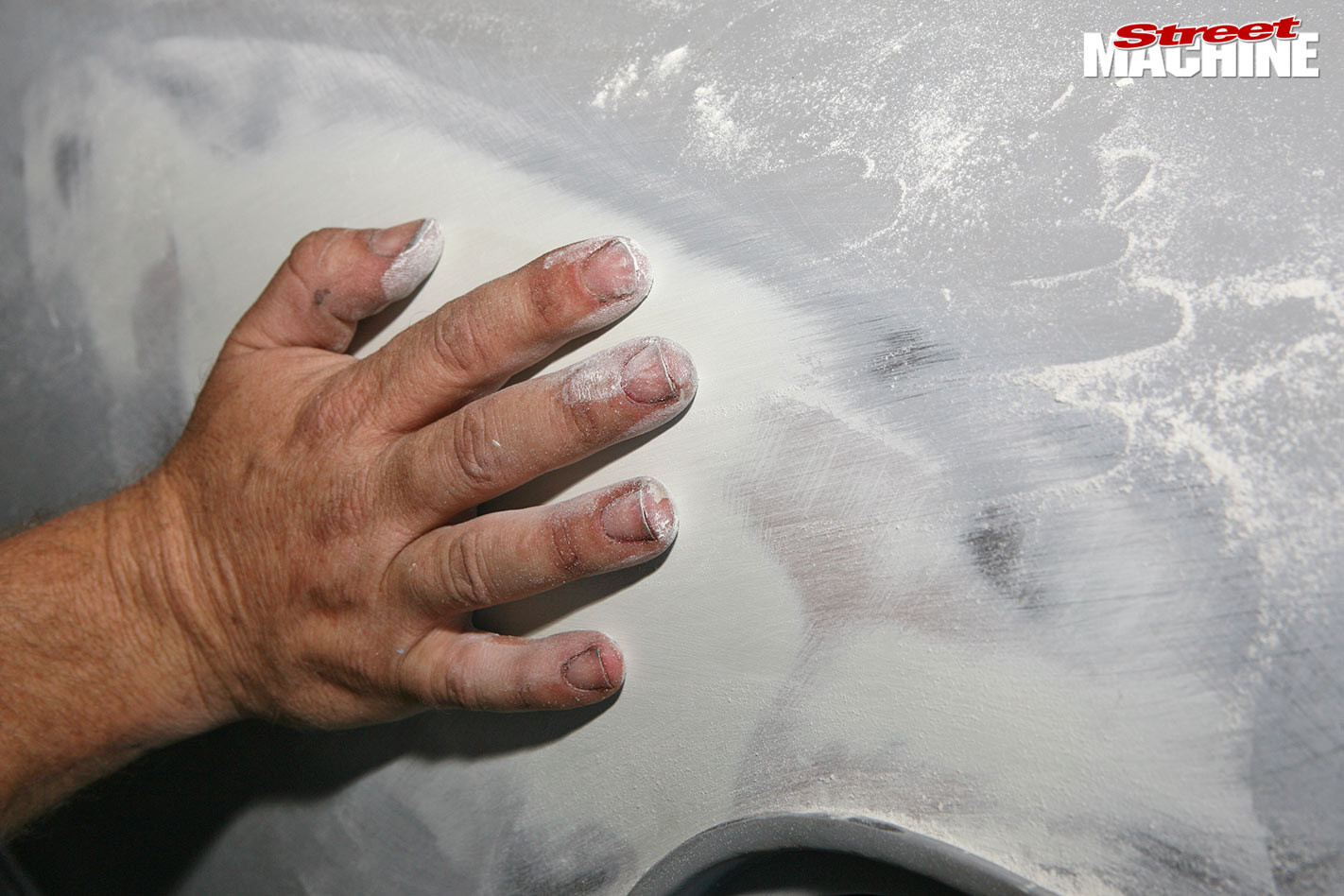 STEP 10. If the area is close to the finished shape, 60 or 80-grit 'production' or 'free cut' paper on a speed file or small block will get the panel level again. Use a crosshatch sanding pattern to prevent digging trenches and be careful not to hollow out the centre. Run the palm of your hand over your work — if it feels bumpy, it is bumpy.
STEP 10. If the area is close to the finished shape, 60 or 80-grit 'production' or 'free cut' paper on a speed file or small block will get the panel level again. Use a crosshatch sanding pattern to prevent digging trenches and be careful not to hollow out the centre. Run the palm of your hand over your work — if it feels bumpy, it is bumpy.
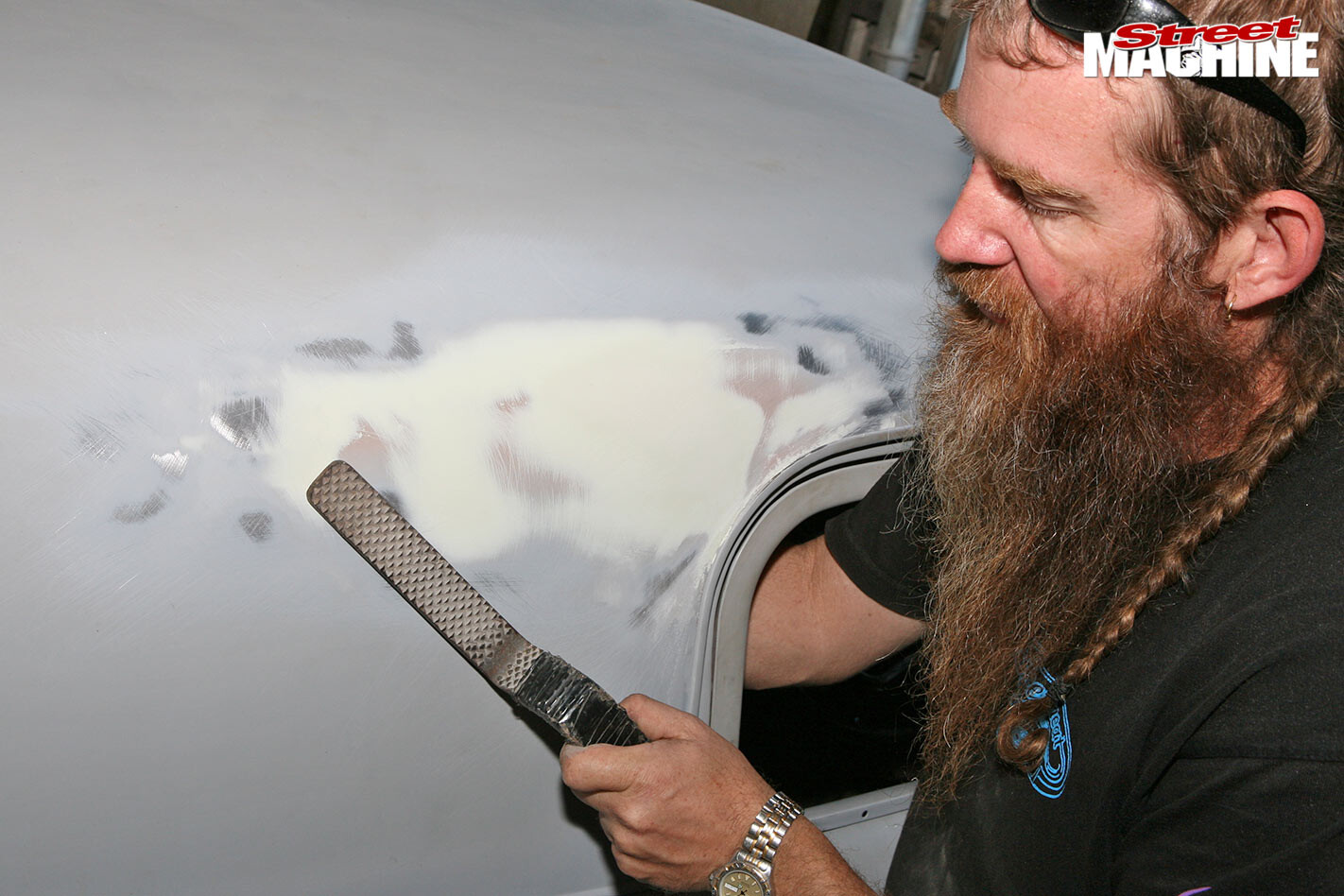 STEP 11. Feathering the edges of the bogged area is the goal, which takes practice. Use firm strokes over the whole area and the edges will look after themselves to a large degree but don't ignore them entirely. Areas of bare metal indicate high spots; stop and check the panel with your straight edge — you may need to tap these down slightly and apply more filler.
STEP 11. Feathering the edges of the bogged area is the goal, which takes practice. Use firm strokes over the whole area and the edges will look after themselves to a large degree but don't ignore them entirely. Areas of bare metal indicate high spots; stop and check the panel with your straight edge — you may need to tap these down slightly and apply more filler.
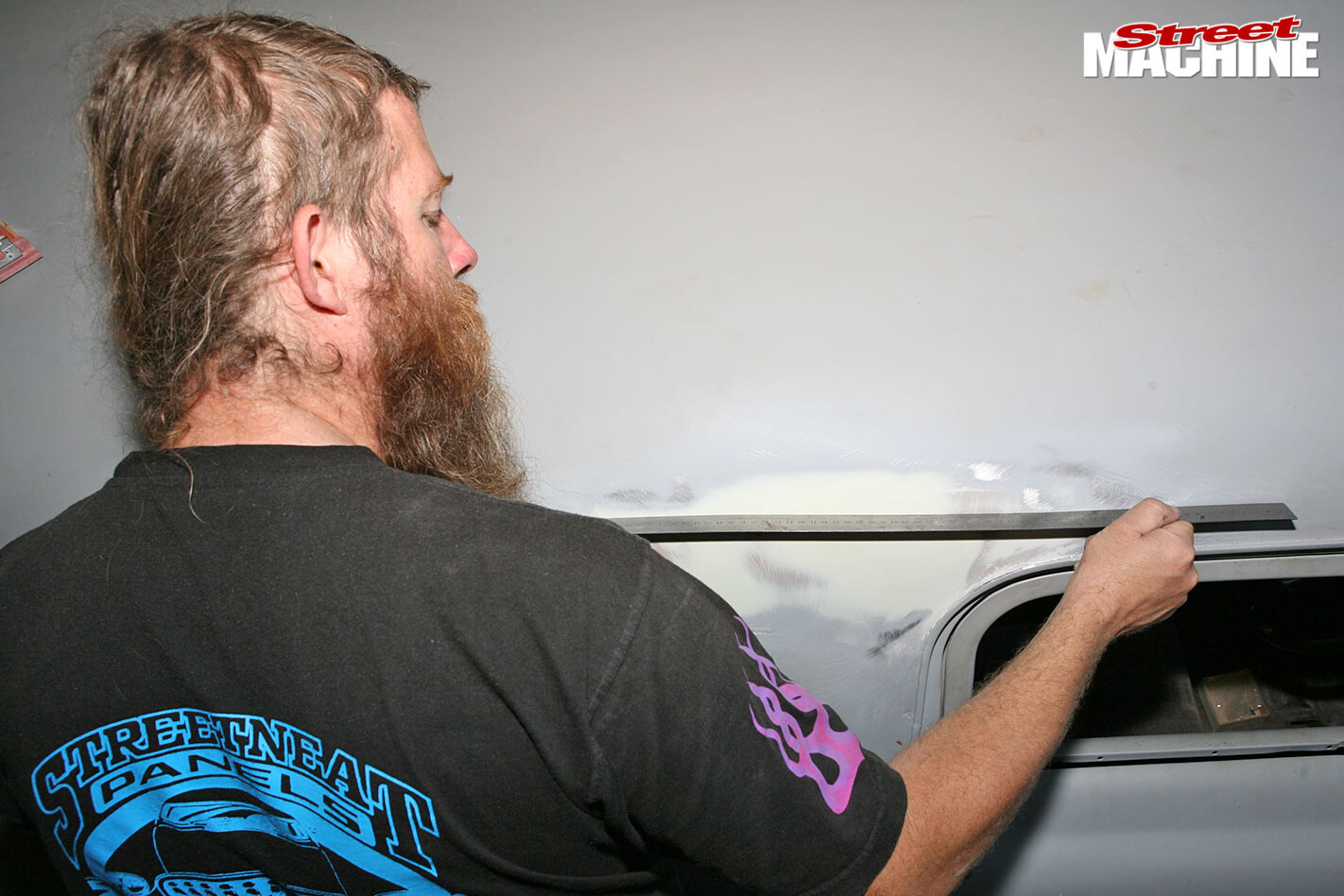 STEP 12. Applying several layers isn't uncommon before the panel's ready for paint. One way to be sure is to apply a mist of black guide coat from a spray can and run the speed file (with 80-grit) over your work, lightly enough to remove just the guide coat. Any highs or lows will quickly become apparent. The ruler test is also useful here.
STEP 12. Applying several layers isn't uncommon before the panel's ready for paint. One way to be sure is to apply a mist of black guide coat from a spray can and run the speed file (with 80-grit) over your work, lightly enough to remove just the guide coat. Any highs or lows will quickly become apparent. The ruler test is also useful here.
 STEP 13. Once you're happy, re-apply guide coat and sand the whole area with 150 or 180-grit to remove deep scratches caused by the 36, 60 and 80-grit papers, avoiding unsightly sink-backs in the final job. Always sand in a crosshatch pattern and alternate from left to right. At this stage, sand the rest of the area that's to be primered with the same paper.
STEP 13. Once you're happy, re-apply guide coat and sand the whole area with 150 or 180-grit to remove deep scratches caused by the 36, 60 and 80-grit papers, avoiding unsightly sink-backs in the final job. Always sand in a crosshatch pattern and alternate from left to right. At this stage, sand the rest of the area that's to be primered with the same paper.
WRAP UP
AT THE end of each day, make sure you clean the area you've been bogging with prep wash, or metho as I prefer, to remove dust and contaminants like sweat or grease. Follow this with a thorough air-gun blow-off. Pinholes in the bog can now be filled with an ultra-thin skim of bog, final glaze, or two-pack stop putty — essentially the same as bog.
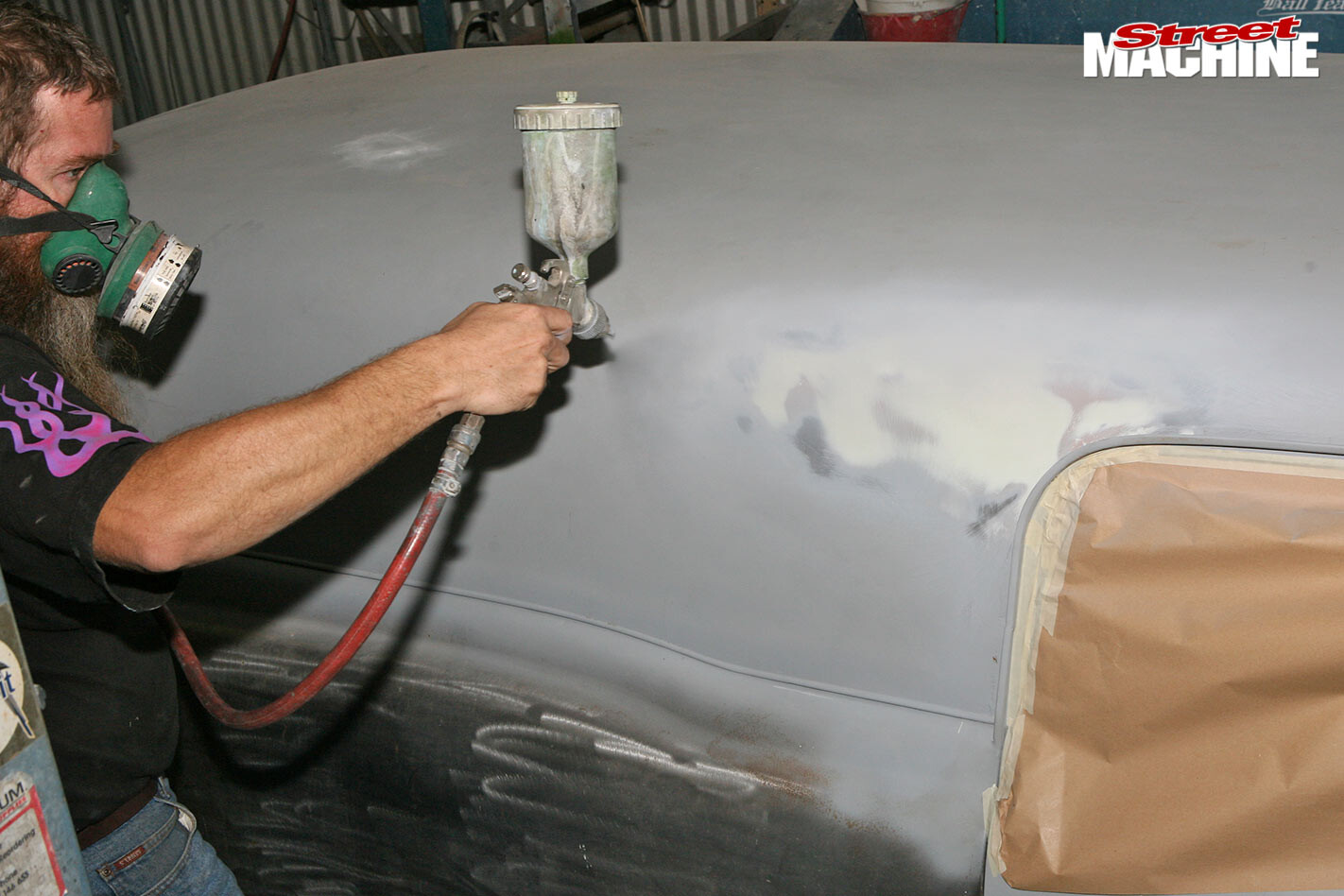 Bog is hygroscopic and will suck moisture out of the air, so the newly completed work must be sealed ASAP. Seeing as most cars are painted in two-pack these days, ideally you'd seal it with a two-pack undercoat or high-build primer. However, due to its toxicity, it's illegal to spray two-pack products at home so use an epoxy primer on the larger jobs and for smaller repairs lay on some acrylic etch to safeguard the panel until you can get it to your painter — ask which they prefer. Never apply epoxy over etch, though the other way around is okay. Ideally, do not expose your primers to the elements.
Bog is hygroscopic and will suck moisture out of the air, so the newly completed work must be sealed ASAP. Seeing as most cars are painted in two-pack these days, ideally you'd seal it with a two-pack undercoat or high-build primer. However, due to its toxicity, it's illegal to spray two-pack products at home so use an epoxy primer on the larger jobs and for smaller repairs lay on some acrylic etch to safeguard the panel until you can get it to your painter — ask which they prefer. Never apply epoxy over etch, though the other way around is okay. Ideally, do not expose your primers to the elements.
That said, high film builds of epoxy primer are good for many months in all weather conditions whereas etch primers should be painted as soon as possible as they're only good for a week or two when kept away from the elements.
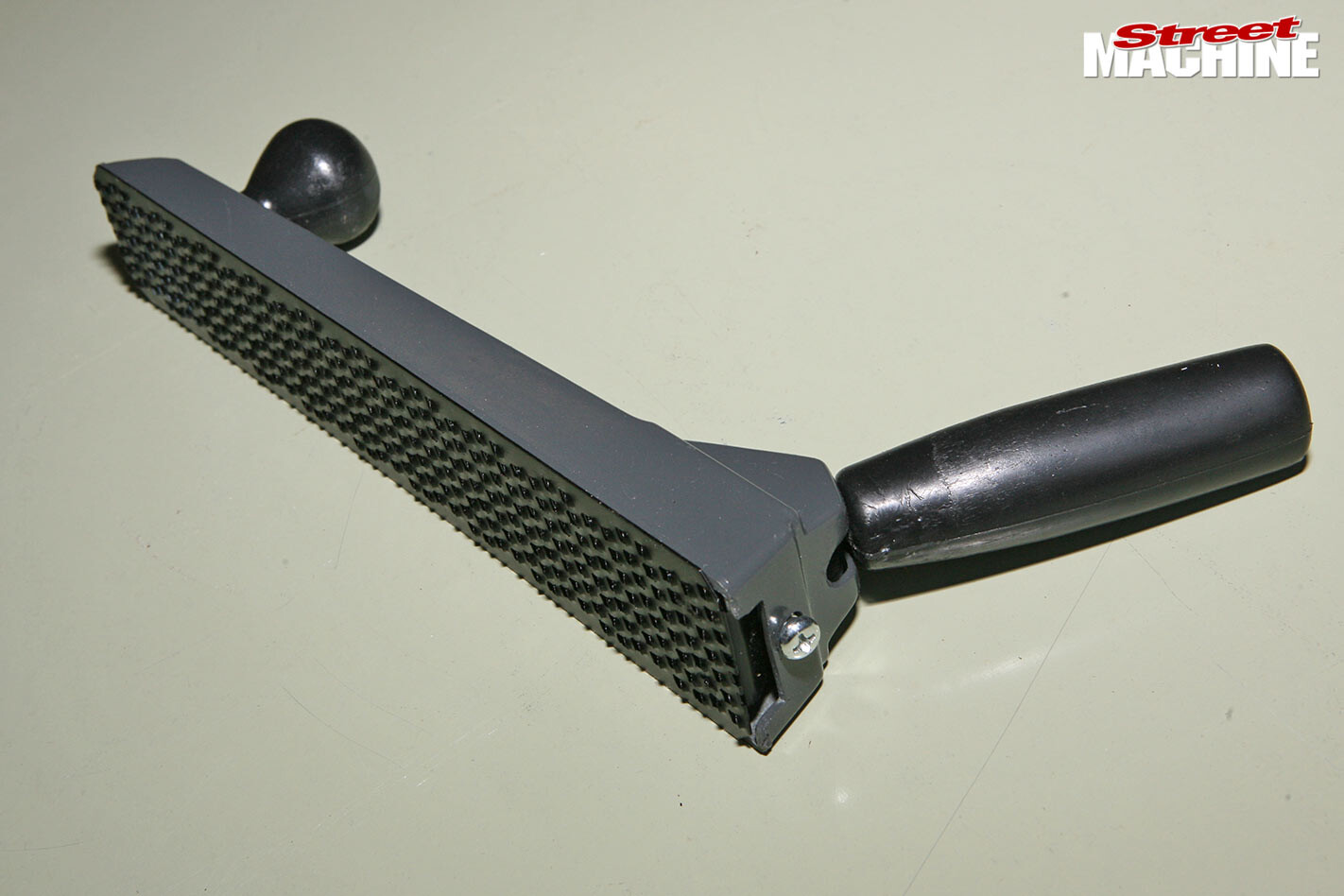 DOS AND DON'TS
DOS AND DON'TS
- Wear a dust mask and work in a clean, well-ventilated area
- After each application, and before the bog dries, scrape your applicator and bog board clean, then wipe them with prep wash or other solvent
- Mix bog thoroughly. Uncatalysed bog can flare up after the car has been painted, especially if left out in the sun
- Be patient; there is no quick way to complete panel work
- Prepare surfaces thoroughly; never apply bog over rust
- Bog doesn't take well to lead. If such areas need filling, apply an epoxy primer first as a base for the bog to adhere to
- Don't bog over holes — not even small badge holes
- Using a bog board with a hard, straight edge is useful for scraping unmixed bog off the applicator during mixing
- Dipping the hardener tube in the bog causes contamination; squeeze it out next to the filler
- Mixing fresh bog over old, hardened bog slows mixing and introduces lumps
- Double dipping when your applicator has mixed bog on it creates hard bits in your filler
- If you do end up with an undesirable hard lump in your freshly mixed bog, dig it out or it will show up when you start sanding
- If the bog starts going off before you're done, stop immediately! Further application will tear up the bog you've already applied
- Seeing metal or epoxy primer under the area you're sanding means it's time to stop sanding
- Bog and its dust are highly flammable — don't smoke or weld around it
- Never let your bog work get wet
- All metal must be keyed with rough paper like 36 or 60-grit for optimum bonding — even new panels
- Avoid applying fresh bog over bog that has been sanded very smooth; rough it up with coarse paper first. Note that finishing glazes are designed to adhere to smooth bog or abraded paint
- Check existing bog-work isn't over rust or paint by sanding it back with 36-grit so that you can see the edges
- If a bogged panel has been unsealed for some time or has been contaminated by oil, grease, sweat, oil-based solvents or paint stripper, rip it all out and redo the lot
- A new tin of bog may have resins floating on top — mix them in before pulling any out for mixing. If it's old, throw it out
- You can apply more bog over epoxy primer than bare steel. But don't abuse the fact
- Small air bubbles will form with overly thick bog applications
- Don't prime over solvent-soaked bog. Dry using an air blower, sunlight or a baking oven
- When roughing out the basic shape, you can begin sanding before the bog is fully cured. However, beginning too soon will result in the bog tearing and clogging the paper or body file
- Using a long board in a cross-hatch pattern is the best way to feather out the edges — but wait until the bog is very hard
- Metal high-spots poking through your bog work won't go away by adding more bog. They need to be lightly tapped down
- Never spray over 36, 60 or 80-grit scratches, or you risk getting sink-backs after the car has been painted
Can You Apply Bondo To Bare Metal "Bmw"
Source: https://www.whichcar.com.au/features/diy/how-to-apply-body-filler-to-your-car
Posted by: brownexter1951.blogspot.com

0 Response to "Can You Apply Bondo To Bare Metal "Bmw""
Post a Comment